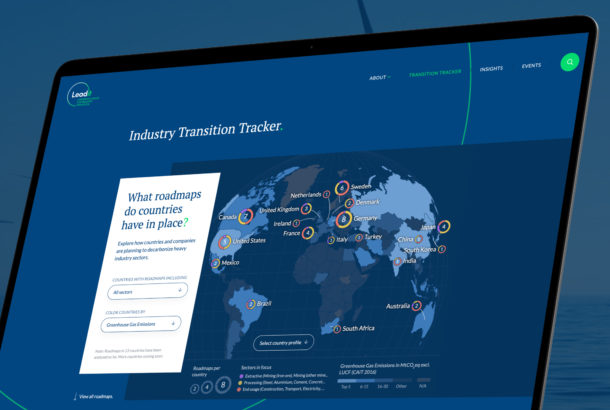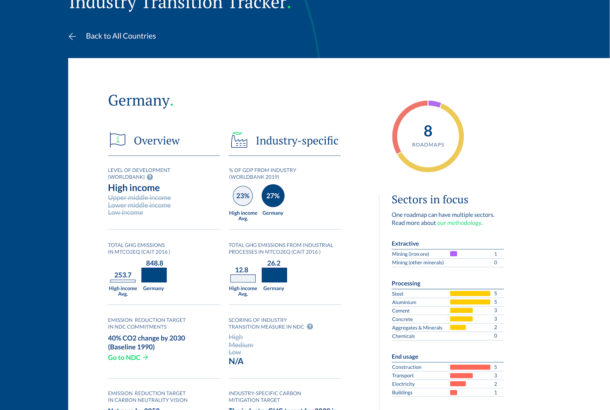New Transition Tracker Features Enhance Users’ Understandings of Decarbonization Progress.
LeadIT’s tracker of industry transition roadmaps now makes it easier to compare decarbonization plans around the world and explore their context. Felipe Sanchez explains.
Explore the new features
Transition TrackerWhat does the update allow users to do that they couldn’t do before?
In the initial release, in November 2020, the Transition Tracker made it possible for users to find industry transition roadmaps in one place and identify the demands in a particular country and industry sector to reach net-zero emissions. It included 29 roadmaps developed by LeadIT member countries.
The latest features add more country roadmaps and make it even easier for users to compare decarbonization efforts across countries and explore trends.
There are three main areas we have addressed in the updates.
First of all, we have expanded the scope of the Transition Tracker to capture roadmaps available from G20 countries. This includes 25 new roadmaps from an additional ten countries – Brazil, Canada, China, Finland, Italy, Japan, Mexico, South Africa, South Korea and Turkey. These inclusions allow users to identify what plans the world’s biggest carbon emitters have in place for the decarbonization of their industries.

Secondly, we’ve added a new ‘country profiles’ feature that allows users to understand the characteristics of a certain country and to compare it to the roadmaps that it has in place. For instance, users will be able to see how national targets match up to their roadmaps or the industry transition measures included in nationally determined contributions (NDC). Moreover, we are introducing a comparison view feature which will make it possible to compare data across multiple countries, all on one screen. By adding this feature, we believe that users will find it easier to observe similarities and differences in national ambitions and the scale of the challenge to decarbonize industry.
Lastly, the Transition Tracker now includes a roadmap comparison feature which focuses on the requirements that roadmaps cite as essential to achieving decarbonization – i.e. policy levers, technological demands and financial needs. This helps users to easily identify similarities and differences across roadmaps and spot trends. For instance, users can explore whether measures to address decarbonization in certain technologies or types of financing are often demanded together or whether certain industries call for the implementation of the same policy levers consistently across countries.
Who benefits from the new features?
With the latest features, users can now better understand a country’s conditions and the obstacles it faces, by looking at a country’s profile or comparing requirements across roadmaps. The new features make it easier for those in government, industry and civil society to find the information they seek and will enable them to learn more about countries and their roadmaps. Those who want to conduct analysis, draw international comparisons or dig deeper into the data available will benefit the most from the latest features.

For instance, policy officials can look at how developed other countries roadmaps are and set international benchmarks for their own decarbonization plans. Researchers and civil society actors will benefit from being able to review the plans that countries have in place and probe into why these countries are not doing more to reach net-zero emissions. They can also investigate the gaps between the plans, that are available in the roadmap, and reality. Lastly, industry representatives will appreciate features that allow them to spot global and regional trends in their sectors without having to source multiple roadmaps individually.
What other new Tracker features are you working on?
While our focus to date has been on capturing national roadmaps, we are aware that regional and global roadmaps have also been published. We are currently capturing the data in these roadmaps and believe that adding a new layer of roadmaps will provide a broader context of the industrial transition being proposed, beyond the confines of national borders.
In addition to this, we are working to make our database downloadable so that users can carry out their own research. We are aiming to have both of these features in place in March.
